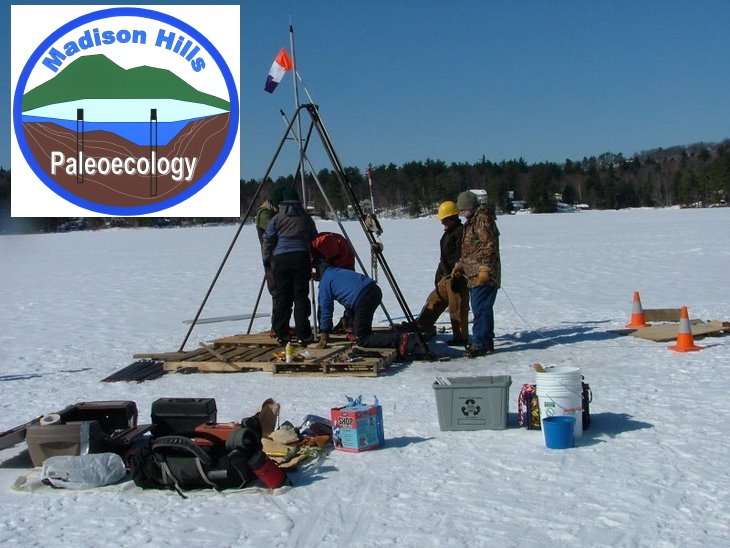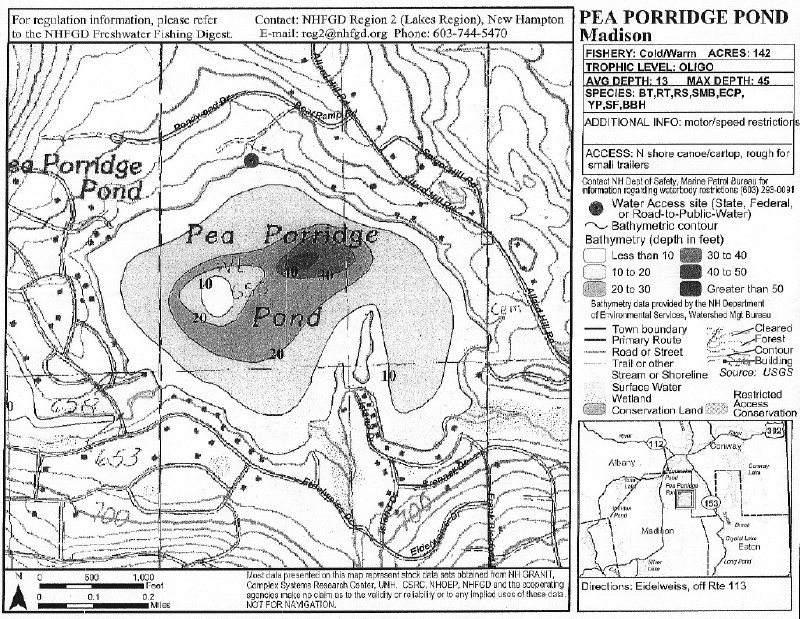Splitting the CoresSorry to offer this posting a little out of order. With all the flurry of follow-up investigation of material sampled from the core, we neglected to offer a glimpse of the core splitting session itself.
A group of us met at Plymouth State University on Saturday, May 3 to begin the process. To start with, we retrieved the deeper core segments from the 4 C coldroom where they had been stored since the original sampling date. The foil and cling wrap covering of the core segment was carefully unwrapped and details regarding its appearance and texture were noted.

Then the segment was split longitudinally into halves to reveal the interior material.
Having laid a tape measure along side it, we photo-documented the segment and, using a standard soil color chart, we noted its appearance before subtle color tones could change as these sediments were exposed to air for the first time in thousands of years.

Most core segments (such as the one below) have a brownish-gray appearance produced by the remains of biologically produced organic materials (plant, animal, and microorganismal remains) mixed with inorganic mineral materials. Brownish organic deposits in lake bottoms is known as "gyttja" (a Swedish word, pronounced "yit-yah").

Then at specific depth intervals along the core, subsamples of sediment were extracted for detailed analysis. All subsamples were removed from one side of the split core so that the opposite side could be stored intact for archival purposes. Subsamples taken



will be examined for the remains of midge larvae (or chironomids – useful in reconstructing past temperatures), pollen (useful in reconstructing a picture of changes in the surrounding landscape), the degree of sediment compaction (useful in analyzing the impact of overlying geological forces) and organic content (using a "loss on ignition" or LOI technique – useful in characterizing changes in overall biological productivity over time). The significance of each of these studies will be presented as results become available in the months ahead.
As we had seen in the field, in the 11th segment we collected, a dramatic change in appearance was noted between the brownish (gyttja) sediments and the gray mineral silts that apparently lack such organics. The illustration below shows that transition point between 23 and 24 meters below the Pond surface. A subsample of sediment from this transition point was used for dating purposes (described in Scientific Posting 16).

Lee Pollock










